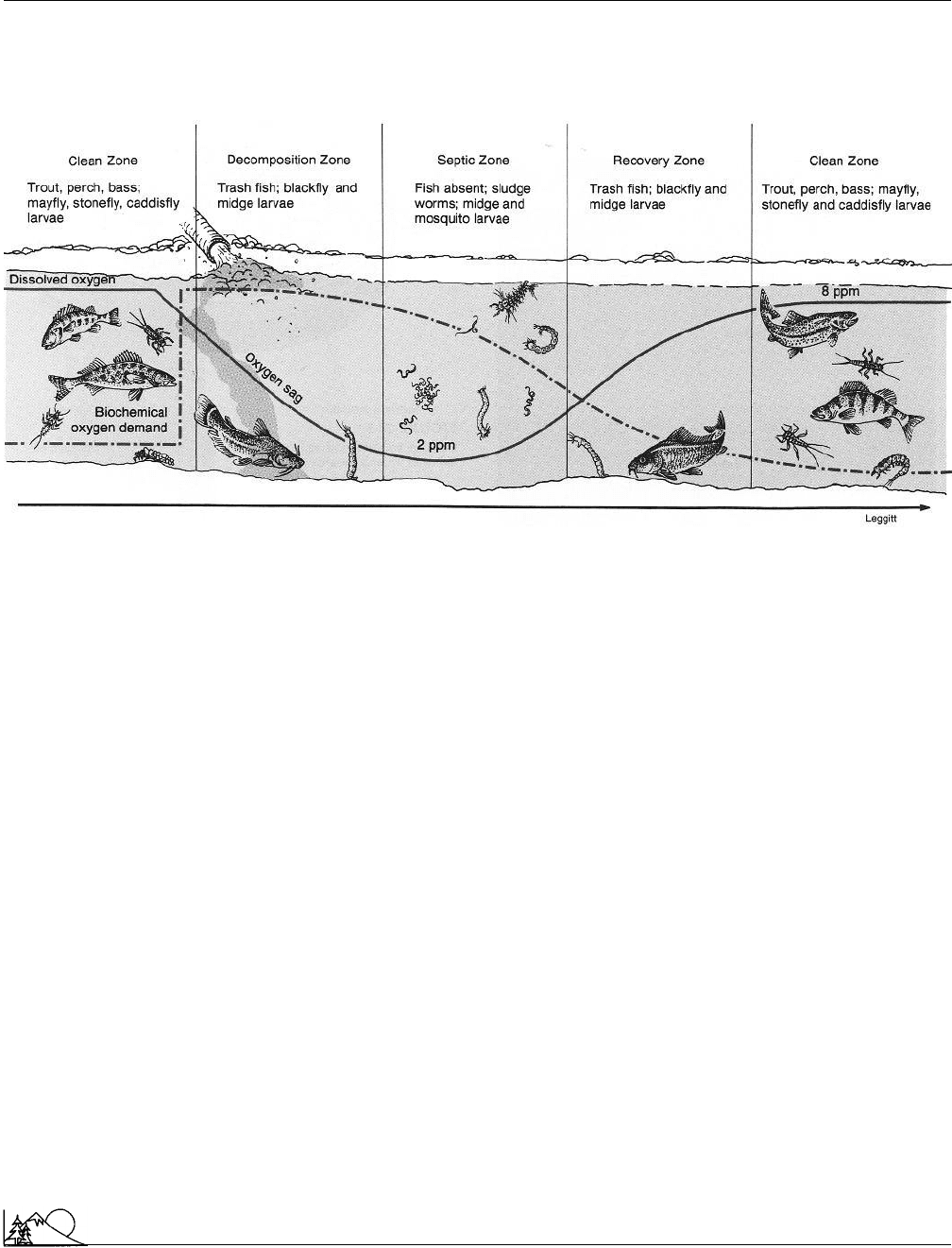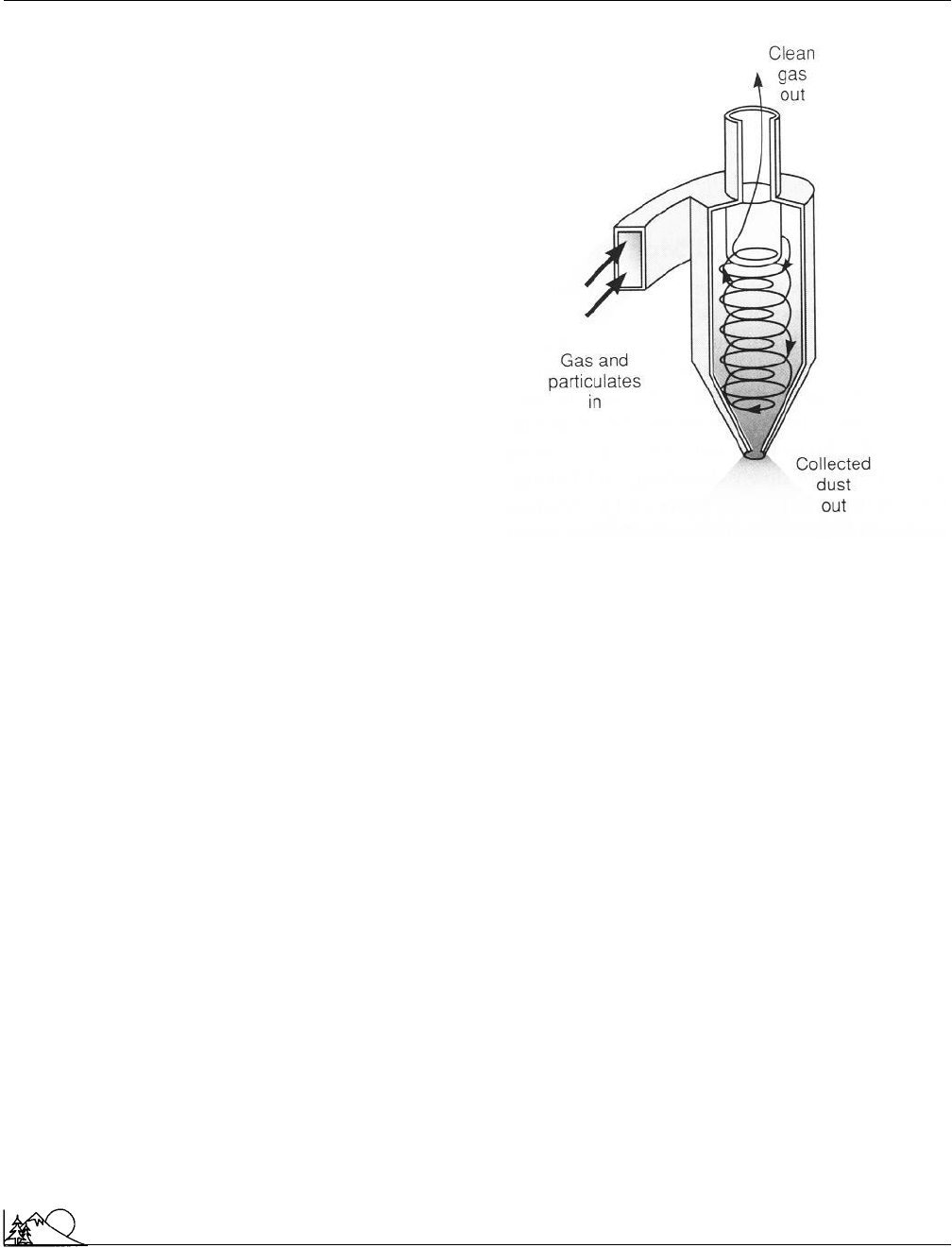Environmental Encyclopedia
Подождите немного. Документ загружается.


Environmental Encyclopedia 3
Cross-Florida Barge Canal
Cronon, William. “:Neither Barren Nor Remote” New York Times (February
28, 2001): A19.
Cross-Florida Barge Canal
The subject of long and acrimonious debate, this attempt
to build a canal across the Florida peninsula began in the
1930s and finally expired in 1990. Although it receives little
attention today, the Cross-Florida Barge Canal stands as a
landmark because it was one of the early cases in which
the
Army Corps of Engineers
, whose primary mission has
traditionally been to re-design and alter natural waterways,
yielded to environmental pressure. The canal’s stated pur-
pose, aside from bringing public works funding to the state,
was to shorten the shipping distances from the East Coast
to the Gulf of Mexico by bypassing the long water route
around the tip of Florida. Rerouting barge traffic would
also bring commerce into Florida, directing trade and trans-
shipment operations through Floridian hands. An additional
supporting argument that persisted into the 1980s was that
the existing sea route brought American commerce danger-
ously close to threatening Cuban naval forces.
Construction on the canal began in 1964, on a route
running from the St. Johns River near Jacksonville west to
the Gulf of Mexico at Yankeetown, Florida. Canal project
plans included three
dams
, five locks, and 110 mi (177 km)
of channel 150 ft (46 m) wide and 12 ft (3. 6 m) deep.
Twenty-five miles (40 km) of this waterway, along with
three locks and three dams, were complete by 1971 when
President Richard Nixon, citing economic inefficiency and
unacceptable environmental risks, stopped the project by
executive order.
From start to finish, the canal’s proponents defended
the project on economic grounds. The Cross-Florida Canal
was proposed as a depression-era job development program.
After completion, commerce and recreational fishing would
boost the state economy. The Army Corps, well-funded and
actively remodelling
nature
in the 1950s and 1960s, took
on the project, vastly overestimating economic benefits and
essentially dismissing environmental liabilities with the argu-
ment that even modest economic gain justified any
habitat
or water loss. After work had begun, further studies con-
cluded that most of the canal’s minimal benefits would go
to non-Floridian agencies and that environmental dangers
were greater than first anticipated. Outcry over environmen-
tal costs eventually led to a reappraisal of economic benefits,
and the state government rallied behind efforts to halt the
canal.
Environmental risks were grave. Although Florida has
more
wetlands
than any other state except Alaska, many
of the peninsula’s natural wetland and riparian habitats had
already been lost to development,
drainage
, and channeliza-
337
tion. Along the canal route these habitats sheltered a rich
community of migratory and resident birds, crustaceans, fish,
and mammals. Fifteen
endangered species
, including the
red-cockaded woodpecker (Picoides borealis) and the Florida
manatee, stood to loose habitat to channelized rivers and
barge traffic. Specialized spring-dwelling mussels and
shrimp that depend on reliable and pure water supplies in
this porous limestone country were also threatened.
Most serious of all dangers was that to the Floridan
aquifer
, located in northern Florida but delivering water to
cities and wetlands far to the south. Like most of Florida,
the reach between Jacksonville and Yankeetown consists of
extremely porous limestone full of
sinkholes
, springs, and
underground channels. The local
water table
is high, often
within a few feet of the ground surface, and currents within
the aquifer can carry water hundreds of meters or more in
a single day. Because the canal route was to cut through 28
mi (45 km) of the Floridan aquifer’s
recharge zone
, the
area in which water enters the aquifer, any pollutants escap-
ing from barges would disperse through the aquifer with
alarming speed. Even a small fuel leak could contaminate
millions of gallons of drinking-quality water. In addition,
a canal would expose the aquifer to extensive urban and
agricultural pollution
from the surrounding region.
Water loss presented another serious worry. A channel
sliced through the aquifer would allow water to drain out
into the sea, instead of remaining underground. Evaporation
losses from impounded lakes were expected to reach or ex-
ceed 40 million gallons of fresh water every day. With water
losses at such a rate, water tables would fall, and salt water
intrusions into the fresh water aquifer would be highly proba-
ble. In 1985, 95% of all Floridians depended on
ground-
water
for home and industrial use. The state could ill afford
the losses associated with the canal.
Florida water management districts joined environ-
mentalists in opposing the canal. By the mid-1980s the
state government, eager to reclaim idle land easements for
development, sale, and extension of the Ocala
National
Forest
, put its weight against the Corps and a few local
development agencies that had been resisting deauthoriza-
tion for almost 20 years. In 1990 the United States Congress
voted to divide and sell the land, effectively eliminating all
possibility of completing the canal.
[Mary Ann Cunningham Ph.D.]
R
ESOURCES
P
ERIODICALS
Hogner, R. H. “Environmentalists Lock Up Canal Development.” Business
and Society Review (Fall 1990): 74-77.

Environmental Encyclopedia 3
Paul J. Cruzen
O
THER
Deauthorization Hearings: The Cross-Florida Barge Canal. United States
House of Representatives Committee on Public Works 1978. Washington,
DC: U. S. Government Printing Office, 1978.
Hearing on the Cross-Florida Barge Canal. United States House of Represen-
tatives Committee on Public Works June 10, 1985. Washington, DC: U.
S. Government Printing Office, 1985.
CRP
see
Conservation Reserve Program (CRP)
Paul J. Cruzen (1933 – )
Dutch Meteorologist
Paul Crutzen is one of the world’s leading researchers in
mapping the chemical mechanisms that affect the
ozone
layer. He has pioneered research on the formation and deple-
tion of the ozone layer and threats placed upon it by industrial
society. Crutzen has discovered, for example, that
nitrogen
oxides
accelerate the rate of ozone depletion. He has also
found that
chemicals
released by bacteria in the
soil
affect
the thickness of the ozone layer. For these discoveries he
has received the 1995 Nobel Prize in Chemistry, along with
Mario Molina and Sherwood Rowland for their separate
discoveries related to the ozone and how
chlorofluorocar-
bons
(CFCs) deplete the ozone layer. According to Royal
Swedish Academy of Science, “by explaining the chemical
mechanisms that affect the thickness of the ozone layer, the
three researchers have contributed to our salvation from a
global environmental problem that could have catastrophic
consequences.”
Paul Josef Crutzen was born December 3, 1933, to
Josef C. Crutzen and Anna Gurek in Amsterdam. Despite
growing up in a poor family in Nazi-occupied Holland dur-
ing 1940–1945, he was nominated to attend high school at
a time when not all children were accepted into high school.
He liked to play soccer in the warm months and ice skate
50–60 mi (80–97 km) a day in the winter. Because he was
unable to afford an education at a university, he attended a
two-year college in Amsterdam. After graduating with a
civil engineering degree in 1954, he designed bridges and
homes.
Crutzen met his wife, Tertu Soininen, while on vaca-
tion in Switzerland in 1954. They later moved to Sweden
where he got a job as a computer programmer for the Insti-
tute of
Meteorology
and the University of Stockholm. He
started to focus on atmospheric chemistry rather than mathe-
matics because he had lost interest in math and did not want
to spend long hours in a lab, especially after the birth of his
two daughters, Illona and Sylvia. Despite his busy schedule,
338
Crutzen obtained his doctoral degree in Meteorology at
Stockholm University at the age of 35.
Crutzen’s main research focused on the ozone, a bluish,
irritating gas with a strong odor. The ozone is a molecule
made up of three oxygen atoms (O
3
) and is formed naturally
in the
atmosphere
by a
photochemical reaction
. The
ozone begins approximately 10 mi (16 km) above Earth’s
surface, reaching between 20–30 miles (32–48 km) in height,
and acts as a protective layer that absorbs high-energy
ultra-
violet radiation
given off by the sun.
In 1970 Crutzen found that soil
microbes
were excre-
ting
nitrous oxide
gas, which rises to the
stratosphere
and is converted by sunlight to nitric oxide and
nitrogen
dioxide. He determined that these two gases were part of
what caused the depletion of the ozone. This discovery revo-
lutionized the study of the ozone and encouraged a surge
of research on global biogeochemical cycles.
In 1977, while he was the director of the National
Center for Atmospheric Research (NCAR) in Boulder, Col-
orado, Crutzen studied the effects of burning trees and brush
in the fields of Brazil. Every year farmers cleared the forests
by burning everything in sight. The theory at the time was
that this burning caused more
carbon
compounds or trace
gases and
carbon monoxide
to enter the atmosphere. These
gases were believed to cause the
greenhouse effect
,ora
warming of the atmosphere. Crutzen collected and examined
this
smoke
in Brazil and discovered that the complete oppo-
site was occurring. He stated in Discover magazine: “Before
the industry got started the tropical burning was actually
decreasing the amount of
carbon dioxide
in the atmo-
sphere.” The study of smoke in Brazil led Crutzen to further
examine what effects larger amounts of different kinds of
smoke might have on the
environment
, such as smoke from
a nuclear war.
The journal Ambio commissioned Crutzen and John
Birks, his colleague from the University of Colorado, to
investigate what effects nuclear war might have on the planet.
Crutzen and Birks studied a simulated worldwide nuclear
war. They theorized that the black carbon soot from the
raging fires would absorb as much as 99% of the sunlight.
This lack of sunlight, coined “nuclear inter,” would be devas-
tating to all forms of life. For this theory Crutzen was named
“Scientist of the Year” by Discover magazine in 1984 and
awarded the prestigious Tyler Award four years later.
As a result of the discoveries by Crutzen and other
environmental scientists, a very crucial international treaty
was established in 1987. The Montreal Protocol was negoti-
ated under the auspices of the United Nations and signed
by 70 countries to slowly phase out the production of chloro-
fluorocarbons and other ozone-damaging chemicals by the
year 2000. However, the United States had ended the pro-
duction of CFCs five years earlier, in 1995. According to the

Environmental Encyclopedia 3
Cryptosporidium
New York Times, “the
National Oceanic and Atmospheric
Administration
reported in 1994, while ozone over the
South Pole is still decreasing, the depletion appears to be
leveling off.” Even though the ban has been established,
existing CFCs will continue to reach the ozone, so the
depletion will continue for some years. The full recovery of
the ozone is not expected for at least 100 years.
From 1977–80, Crutzen was director of the Air Qual-
ity Division, National Center for Atmospheric Research
(NCAR), located in Boulder, Colorado. While at NCAR,
he located he taught classes at Colorado State University in
the department of Atmospheric Sciences. Since 1980 he has
been a member of the Max Planck Society for the Advance-
ment of Science, and he is the director of the Atmospheric
Chemistry division at Max Planck Institute for Chemistry.
In addition to Crutzen’s position at the institute, he is a
part-time professor at Scripps Institution of Oceanography
at the University of California. In 1995 he was the recipient
of the United Nations Environmental Ozone Award for
outstanding contribution to the protection of the ozone layer.
Crutzen has co-authored and edited several books, as well
as having published several hundred articles in specialized
publications.
[Sheila M. Dow]
R
ESOURCES
B
OOKS
Cruzen, Paul. Atmosphere, Climate, and Change. Scientific American Li-
brary, 1995.
———. Atmosphere Change: An Earth System Perspective. W.H. Free-
man, 1993.
———. Environmental Consequences of Nuclear War 1985. Schwarzer Him-
mel, 1986.
Cryptosporidium
Cryptosporidium is a microscopic protozoan parasite that is
a significant cause of diarrheal disease (cryptosporidiosis) in
humans and animals, including ruminants, swine, cats, and
dogs. The word cryptosporidium means hidden spore, refer-
ring to the ease with which it can escape detection in environ-
mental samples. Most cryptosporidiosis appears to be caused
by the
species
Cryptosporidium parvum. The dormant and
resistant forms of Cryptosporidium, referred to as oocysts, are
excreted in the feces of infected humans and animals and
can survive under a wide range of environmental conditions.
Cryptosporidiosis had long been recognized as a veterinary
problem, especially in young farm animals, but was only
recognized as a cause of human disease in 1976, when it
was diagnosed in animal handlers.
339
The most common symptom of cryptosporidiosis is
watery diarrhea. Other symptoms may include abdominal
cramps, nausea, low-grade fever, dehydration, and weight
loss. Symptoms usually develop four to six days after infec-
tion, but may occur from two to 10 days after infection. In
individuals with healthy, normal immune systems, the dis-
ease usually only lasts for several days, and rarely more than
two weeks. Some infected persons may not even become ill,
while others become ill, seem to recover, but become ill
again. Infected persons may shed oocysts in their feces for
months, even when they are not exhibiting disease
symptoms.
Cryptosporidiosis can cause complications in persons
with diabetes, alcoholism, or pregnancy. Diarrhea and dehy-
dration can severely affect the very young, the elderly, and
the frail. Cryptosporidiosis can be prolonged and life-threat-
ening in immuno-compromised individuals (those who have
weak immune systems), such as transplant patients, people
infected with the Human Immunodeficiency
Virus
(HIV)
(which causes Acquired Immuno-Deficiency Syndrome
[AIDS]),
cancer
patients on chemotherapy, and persons
who are taking medications that suppress the immune sys-
tem. By 1983, the number of infections in humans was
increasing as the
AIDS
epidemic began; also diagnostic meth-
ods were developed to identify the parasite in stool samples,
which aided in the identification and documentation of the
disease.
In industrialized nations, about 0.4% of the population
passes oocysts in the feces at any one time, while about 2–
2.5% of patients admitted to hospitals are passing oocysts.
About 30–35% of the United States population have anti-
bodies in their blood to Cryptosporidium. In developing na-
tions, the prevalence is higher, where up to 60–70% of people
have circulating antibodies in their blood to Cryptosporidium.
In AIDS patients, the numbers of individuals with chronic
cryptosporidiosis is about 10% in industrialized nations and
up to 40% in some developing nations.
Cryptosporidiosis cannot be diagnosed by symptoms
alone, but must be confirmed with a specific diagnostic stool
test for the parasite. There is no drug available to cure
cryptosporidiosis. Symptoms are treated with anti-diarrheal
medicines and fluids to prevent dehydration. People with
strong immune systems will recover on their own and may
develop limited immunity to recurring infections.
A person can become infected with Cryptosporidium
by ingesting anything that has been in contact with feces
from an infected person or animal. Hands can become con-
taminated with Cryptosporidium through person-to-person
contact, such as changing of a child’s diaper, caring for
someone with diarrhea, or touching a part of the body con-
taminated with feces. Cryptosporidiosis is easily spread
through social groups, such as families, day care centers, and

Environmental Encyclopedia 3
Cryptosporidium
nursing homes. Persons who work with animals or touch
soils or objects contaminated with feces can contract crypt-
osporidiosis.
Infection with Cryptosporidium can also occur by
drinking water that is contaminated with oocysts. The first
report of spread of cryptosporidiosis through a municipal
drinking water system was in 1987 in Carrollton, Georgia,
where 13,000 people, out of a total population of 65,000,
became ill. In 1993, a municipal drinking water system in
Milwaukee, Wisconsin, became contaminated with Crypt-
osporidium, and 400,000 people became ill. Four thousand
people were hospitalized, at a cost of $54 million, and 100
people died, including some persons with AIDS. Both water
systems had met all state and drinking water standards.
There have also been more than a dozen outbreaks reported
in the United Kingdom. These outbreaks demonstrated the
risks of waterborne cryptosporidiosis, for unfortunately
Cryptosporidium oocysts are resistant to many environmental
stresses and chemical disinfectants such as
chlorine
that are
used in municipal drinking water systems and swimming
pools (swallowing a small amount of water while swimming
in a chlorinated pool can cause cryptosporidiosis). The mech-
anism that protects oocysts from
chlorination
has not yet
been positively identified—the oocyst membrane may be
protective, or an oocyst may pump
toxins
from its cell before
the toxins can cause harm.
Oocysts are present in most surface bodies of water
in the United States, many of which are sources of public
drinking water. They become more prevalent during periods
of
runoff
(generally from March-June during spring rains
in North America) or when
wastewater
treatment plants
become overloaded or break down. Properly drilled and
maintained
groundwater wells
, with intact well casings,
proper
seals
, and above-ground caps, are not likely to con-
tain Cryptosporidium because of natural
filtration
through
soil
and
aquifer
materials.
The detection of Cryptosporidium oocysts is unreliable,
for recovery and enumeration of oocysts from water samples
is difficult. Concentration techniques for oocysts in water
samples are poor, and detection methods often measure algae
and other debris in addition to oocysts. The volume of water
required to concentrate oocysts for detection can range from
26–264 gal (100–1,000 l). Determination of whether oocysts
are infective and viable or a member of the species that
causes disease is not easy to accomplish. The development
of more accurate, rapid and improved assays for oocysts
is required, for present tests are time-consuming, highly
subjective, and dependent on the skills of the analyst.
In addition, the number of oocysts (the effective dose)
required to cause cryptosporidiosis has not yet been well-
defined and requires more investigation. Studies to date have
suggested that the 50% infectious dose may be around 132
340
oocysts, and in some cases, as few as 30 oocysts (infections
have also occurred with the ingestion of a single oocyst).
Human susceptibility to Cryptosporidium likely varies be-
tween individuals and between various Cryptosporidium
strains.
Therefore protection of drinking water supplies from
contamination by Cryptosporidium requires multiple ap-
proaches. Filtration of drinking water supplies is the only
reliable conventional treatment method. Water in a treat-
ment plant is mixed with coagulants that aid in the settling
of particles in water; removal can be enhanced by using sand
filtration.
Ozone
disinfection can kill Cryptosporidium but
ozone does not leave a residual in the distribution system
as chlorine does, which provides protection of treated water
to the point of use but does not neessarily kill Cryptosporidium
anyway.
Watershed
protection to prevent contamination from
entering water sources is also important in protection of
drinking water supplies. Regulation of septic systems and
best management practices
can be used to control runoff
of human and animal wastes.
An individual can also take steps to ensure that drink-
ing water is safe. Boiling water (bringing water to a rolling
boil for at least one minute) is the best way to kill Cryptospori-
dium. After boiling, the water should be stored in the refrig-
erator in a clean bottle or pitcher with lid; care should be
taken to avoid touching the inside of the bottle or lid to
prevent re-contamination. Point-of-use
filters
, either
attached to a faucet, or the pour-through type, can also be
used to remove Cryptosporidium from water. Only filters
with an absolute, rather than a nominal, pore size of one
micron or smaller should be used to remove oocysts. Reverse
osmosis filters are also effective. Lists of filters and reverse
osmosis filters that will remove Cryptosporidium oocysts can
be obtained from NSF International, an independent non-
profit testing agency.
The use of bottled water is not necessarily safer than
tap water, as water from a surface water source has the same
risks of containing oocysts as tap water from that source,
unless it has been treated with appropriate treatment tech-
nologies, such as distillation, pasteurization, reverse osmosis,
or filtration with an absolute one micron rating, before bot-
tling. Bottled water from deep groundwater wells has a low
likelihood of being contaminated with oocysts, so the labels
on water bottles should be examined before use to determine
water source and treatment methods.
Food can also be a source of Cryptosporidium. In 1996,
in the Northeastern United States, unpasteurized apple cider
and juice was associated with Cryptosporidium infections. In
1997, in Spokane, Washington, members of a group at-
tending a dinner banquet become ill with cryptosporidiosis.
The parasite may be present in uncooked or unwashed fruits

Environmental Encyclopedia 3
Cubatao, Brazil
and vegetables that are grown in areas where manure was
used or animals were grazed or in beverages or ice prepared
with contaminated water. Pasteurization of dairy products
will kill oocysts. Bottled and canned drinks, such as soda
and beer, are usually heated and/or filtered sufficiently to
kill or remove Cryptosporidium oocysts. Care should be taken
to wash hands thoroughly with soap and water before eating,
preparing or serving food. Fruits and vegetables that will be
eaten raw should be washed or peeled before being eaten.
When traveling to areas with poor
sanitation
, extra care
should be taken in the selection of food and drink.
[Judith L. Sims]
R
ESOURCES
B
OOKS
Fayer, Ron, ed.Cryptosporidium and Cryptosporidiosis. Boca Raton, FL: CRC
Press, 1997.
Frey, Michelle, Carrie Hancock, and Gary S. Logsdon. Cryptosporidium:
Answers to Questions Commonly Asked by Drinking Water Professionals. Den-
ver, CO: American Water Works Association, 1998.
Small, Mitchell J., ed. Protocol for Cryptosporidium Risk Communication.
Denver, CO: American Water Works Association, 2002.
Rose, Joan B., and Huw V. Smith. Giardia and Cryptosporidium Handbook:
A Practical Guide. Boca Raton, FL: CRC Press, 2000.
P
ERIODICALS
Conrad, Laura. “The Tedious Hunt for Cryptosporidium.” Today’s Chemist
at Work 7 (1998): 24–26.
Guerrant, Richard L. “Cryptosporidiosis: An Emerging, Highly Infectious
Threat.” Emerging Infectious Diseases January/March 1997 [June 2002]
<http://www.cdc.gov/ncidod/EID/vol3no1/guerrant.htm>.
O
THER
Cryptosporidium: A Waterborne Pathogen. Water Quality Information Cen-
ter, National Agricultural Library, Agricultural Research Center, U.S. De-
partment of Agriculture. May 1996 [May 2002]. <http://www.nal.usda.gov/
wqic/cornell.html>.
“Cryptosporidium parvum.” Bad Bug Book. Foodborne Pathogenic Microor-
ganisms and Natural Toxins Handbook, Center for Food Safety & Applied
Nutrition, U.S. Food and Drug Administration. February 13, 2002 [June
2002]. <http://vm.cfsan.fda.gov/~mow/chap24.html>.
Fact Sheet: Cryptosporidium. Division of Parasitic Diseases, National Center
for Infectious Diseases, Centers for Disease Control and Prevention. May
2001 [June 2002]. <http://www.cdc.gov/ncidod/dpd/parasites/cryptospori-
diosis/factsht_cryptosporidiosis.htm>.
Fact Sheet: Preventing Cryptosporidiosis—A Guide to Water Filters and Bottled
Water. Division of Parasitic Diseases, National Center for Infectious Dis-
eases, Centers for Disease Control and Prevention. August 15, 1999 [June
2002]. <http://www.cdc.gov/ncidod/dpd/parasites/cryptosporidiosis/
factsht_crypto_prevent_water.ht>.
CSOs
see
Combined Sewer Overflows
341
Cubatao, Brazil
Once called the “valley of death” and the “most polluted
place on earth,” Cubatao, Brazil, is a symbol both of severe
environmental degradation
and how people can work
together to clean up their
environment
. A determined effort
to reduce
pollution
and restore the badly contaminated air
and water in the past decade has had promising results.
While not ideal by any means, Cubatao is no longer among
the worst places in the world to live.
Cubatao is located in the state of Sa
˜
o Paulo, near the
Atlantic coastal city of Santos, just at the base of the high
plateau on which Sa
˜
o Paulo—Brazil’s largest city—sprawls.
Thirty years ago, Cubatao was an agreeable, well-situated
town. Overlooking Santos Bay with forest-covered mountain
slopes rising on three sides around it, Cubatao was well
removed from the frantic hustle and bustle of Sa
˜
o Paulo on
the hills above. Several pleasant little rivers ran through the
valley and down to the sea. When the rivers were dammed to
generate electricity in the early 1970s, however, the situation
changed.
Cheap energy and the good location between Sa
˜
o
Paulo and the port of Santos attracted industry to Cubatao.
An oil refinery, a steel mill, a
fertilizer
plant, and several
chemical factories crowded into the valley, while workers
and job-seekers scrambled to build huts on the hillsides and
the swampy lowlands between the factories. With almost
no
pollution control
enforcement, industrial smokestacks
belched clouds of dust and toxic effluents into the air while
raw sewage and chemical waste poisoned the river. By 1981,
the city had 80,000 inhabitants and accounted for 3% of
Brazil’s industrial output. It was called the most polluted
place in the world. More than 1,000 tons of toxic gases were
released into the air every day. The steaming rivers seethed
with multi-hued chemical slicks, foamy suds, and debris.
No birds flew in the air above, and the hills were covered
with dying trees and the scars of
erosion
where rains washed
dirt down into the valley.
Sulfur dioxide
, which damages lungs, eats away
building materials, and kills vegetation, was six times higher
than World Health Organization guidelines. After a few
hours exposure to sunlight and water vapor, sulfur oxides
turn into sulfuric
acid
, a powerful and dangerous corrosive
agent. Winter air inversions would trap the noxious gases
in the valley for days on end. One quarter of all emergency
medical calls were related to respiratory ailments. Miscar-
riages, stillbirths, and deformities rose dramatically. The
town was practically uninhabitable.
The situation changed dramatically in the mid-1980s,
however. Restoration of democracy allowed citizens to orga-
nize to bring about change. Governor Franco Montoro was
elected on promises to do something about pollution, and

Environmental Encyclopedia 3
Cultural eutrophication
his administration came through on campaign promises.
Between 1983 and 1987, the government worked with in-
dustry to enforce pollution laws and to share the costs of
clean-up. Backed by a
World Bank
loan of $100 million,
the state and private industry invested more than $200 mil-
lion for pollution control. By 1988, 250 out of 320 pollution
sources were reduced or eliminated. Ammonia releases were
lowered by 97%,
particulate
emissions were reduced 92%,
and sulfur dioxide releases were cut 84%. Ozone-producing
hydrocarbons
and volatile organic compounds dropped
nearly 80%. The air was breathable again. Vegetation began
to return to the hillsides around the valley, and birds were
seen once more.
Water quality
also improved. Dumping of trash and
industrial wastes was cut from some 64 metric tons per day
to less than 6 tons. Some 780,000 tons of
sediment
were
dredged out of the river bottoms to remove toxic contami-
nants and to improve water flow. Fish returned to the rivers
after a 20-year absence. Reforestation projects are replanting
native trees on hillsides where mudslides threatened the
town. The government of Brazil now points to Cubatao
with pride as an illustration of its concern for environmental
protection. This is a heartening example of what can be
done to protect the environment, given knowledge, commit-
ment, and cooperation.
[William P. Cunningham Ph.D.]
R
ESOURCES
P
ERIODICALS
“Cubatao: Brazil’s Ecological Success.” Financial Times (10 June 1988).
“Cubatao: New Life in the Valley of Death.” World Resources 1990-91.
Washington, DC: World Resources Institute, 1991.
Cultivation
see
Agricultural pollution
Cultural eutrophication
One of the most important types of
water pollution
, cul-
tural eutrophication describes human-generated fertilization
of water bodies. Cultural denotes human involvement, and
eutrophication means truly nourished, from the Greek word
eutrophic. Key factors in cultural eutrophication are
nitrates
and
phosphates
, and the main sources are treated sewage
and
runoff
from farms and urban areas. The concept of
cultural eutrophication is based on anthropocentric values,
where clear water with minimal visible organisms is much
preferred over water rich in green algae and other
microor-
ganisms
.
342
Nitrates and phosphates are the most common lim-
iting factors for organism growth, especially in aquatic eco-
systems. Most fertilizers are a combination of
nitrogen
,
phosphorus
, and potassium. Nitrates are key components
of the amino acids,
peptides
, and proteins needed by all
living organisms. Phosphates are crucial in energy transfer
reactions within cells. Natural sources of nitrates (and am-
monia) are more readily available than phosphates, so the
latter is often cited as the crucial limiting factor in plant
growth. Nitrates are supplied in limited quantities by de-
caying plant material and nitrogen-fixing bacteria, but phos-
phates must come from animal bones, organic matter, or
from the breakdown of phosphate-bearing rocks. Conse-
quently, the introduction and widespread use of phosphate
detergents
, combined with excess
fertilizer
in runoff, has
produced a near ecological disaster in some waters.
In ecosystems, there is a continuous cycling of matter,
with green algae and plants making food from
chemicals
dissolved in water via
photosynthesis
; this provides the
food base needed by herbivores and carnivores. Dead plant
material and animals are then decomposed by
aerobic
(oxy-
gen using) and
anaerobic decomposers
into the simple
elements they came from. Natural water bodies are usually
well-suited for handling this matter cycling; however, human
impacts often inject large amounts of additional nutrients
into the system, changing them from
oligotrophic
(poorly
nourished) to eutrophic water bodies. Once present within
a relatively closed body of water, such as a lake or
estuary
,
these extra nutrients may cycle numerous times before leav-
ing the system.
Green algae and trashy fish may thrive in eutrophic
water, but most people are offended by what they perceive
as “scum.” Nutrient-poor water is usually clear and possesses
a rich supply of oxygen, but as the
nutrient
load increases,
oxygen levels drop and turbidity rises. For example, when
sewage is dumped into a body of water, the sewage fertilizes
the algae, and as they multiply and die the aerobic decom-
posers multiply in turn. The increased demand for oxygen
by the decomposers outstrips the system’s ability to provide
it. As a result,
dissolved oxygen
levels may fall or sag even
below 2.0
parts per million
, the threshold below which
even trashy fish cannot a survive (trout need at least 8.0
ppm to survive). Even though the green algae are producing
oxygen as a byproduct of photosynthesis, even more oxygen
is consumed by decomposers breaking down the dead algae
and other organisms.
As water flows downstream the waste is slowly broken
down, so there is less for the decomposers to feed on. Biolog-
ical oxygen demand slowly falls, while the dissolved oxygen
levels rise until the river is finally back to normal levels.
Most likely, the nutrients recycled by decomposers are either
diluted, turned into
biomass
by trees and consumer organ-

Environmental Encyclopedia 3
Cultural eutrophication
Oxygen sag downstream of a source of organic pollution. (McGraw-Hill Inc. Reproduced by permission.)
isms, or tied up in bottom sediments. Thus a river can
naturally cleanse itself of
organic waste
if given sufficient
time. Problems arise, however, when discharges are too large
and frequent for the river to handle; under extreme condi-
tions it becomes “dead” and is suited only for low-order,
often anaerobic, organisms. Municipalities using river water
locate their intakes upstream and their
sewage treatment
plants and storm drains downstream. If communities were
required to do the reverse, the quality of river water would
dramatically improve.
The major sources of nitrates and phosphates in
aquatic systems are treated sewage
effluent
; excess fertilizer
from farms and urban landscapes; and animal wastes from
feedlots
, pastures, and city streets. In some areas with pris-
tine waters, such as
Lake Tahoe
, tertiary sewage treatment
has been added; chemicals are used to reduce nitrate and
phosphate levels prior to
discharge
.
Runoff from nonpoint sources is a far more difficult
problem because they are harder to control and remediate
than runoff from point sources. Point sources can be diverted
into treatment plants, but the only feasible way to reduce
nonpoint sources is by input reduction or by on-site control.
343
Less fertilizer more frequently applied, especially on urban
lawns, for example, would help reduce runoff. Feedlots are
a major concern; runoff needs to be collected and treated in
the same manner as human sewage; this may also apply to
street runoff. Green cattle ponds are a sure sign of the
abundant nutrients supplied by these mobile meat factories.
Phosphate detergents are superior cleaning agents than
soap, but the resultant
wastewater
is loaded with this key
limiting factor. Phosphate levels in detergents have since
been reduced, but its impact is so powerful that abatement
may require tertiary treatment.
The battle between Oklahoma and Arkansas over Illi-
nois River
pollution
provides a useful case study of the
debate over cultural eutrophication. This river has its head-
waters in Arkansas and has become a prime tourist attraction
in Oklahoma. Enthusiasts come from all over to canoe the
river; summer use is especially heavy. However, economic
development within the basin has resulted in a steady decline
in river quality.
Arkansas started a legal war with Oklahoma when it
sought and obtained
Environmental Protection Agency

Environmental Encyclopedia 3
Cuyahoga River
(EPA) approval to dump half of the treated sewage from a
new plant in Fayetteville into a tributary of the Illinois.
Arkansas argued that its state-of-the-art treatment plant
would produce an effluent having little impact on
water
quality
by the time it reached the border. Oklahoma coun-
tered that it could not risk the potential economic loss if
the river became polluted.
This controversy has had a salutary impact on research
into the causes of cultural eutrophication within this basin.
Scientists from Oklahoma State University and the Univer-
sity of Arkansas are collaborating on a long-term study of
river quality and pollution sources. It is highly likely that
nonpoint sources within both states will be identified as the
key culprits, especially from livestock operations.
There is one major success story in the battle to over-
come the effects of cultural eutrophication. The Thames
River in England was devoid of aquatic life for centuries.
Now a massive cleanup effort is restoring the river to vitality.
Many fish have returned, most notably the pollution-sensi-
tive
salmon
, which had not been seen in London for 300
years. However, much work remains, especially in former
Warsaw Pact countries and those in the
Third World
.
[Nathan H. Meleen]
R
ESOURCES
B
OOKS
Pettyjohn, W. A. Water Quality in a Stressed Environment. Minneapolis:
Burgess, 1972.
P
ERIODICALS
Canby, T. “Water: Our Most Precious Resource.” National Geographic 158
(August 1980): 144-179.
Harleman, D. R. F. “Cutting the Waste in Wastewater Cleanups.” Technol-
ogy Review 93 (April 1990): 60-69.
Herber, L. “Cool, Refreshing--and Filthy.” In The Human Habitat: Contem-
porary Readings, edited by David L. Wheeler. New York: Van Nostrand
Reinhold, 1971.
Maurits la Riviere, J. W. “Threats to the World’s Water.” Scientific American
261 (September 1989): 80-84+.
Cuyahoga River
This 103-mi (166-km) long tributary of
Lake Erie
is a classic
industrial river, with, however, one monumental distinction:
it caught fire–twice. The first fire, in 1959, burned for eight
days; fireboats merely spread the blaze. Typical of the times,
a November 1959 article in Fortune seemed to glorify the
industrial
pollution
here, with words and a portfolio of
drawings reminiscent of Charles Dickens. Inspired by feel-
ings of space and excitement, the artist stated: “It is a great
expanse, with a smoky cast over everything, smudged with
orange dust from the ore–an overall brown color.” Cleveland-
344
ers consoled themselves that the foul water at least symbol-
ized prosperous times.
The second fire occurred on June 22, 1969, as several
miles of river along the lowland industrial section called “the
Flats” ignited, fed by bunker oil, trash, and tree limbs trapped
by a bridge 6 mi (9.7 km) upstream. This fire, along with the
Santa Barbara oil well blowout, provided graphic television
images which were projected around the world. Jack A.
Seamonds’s June 18, 1984 article in U.S. News & World
Report credited the fire with lighting “the fuse that put the
bang in the nationwide campaign to clean up the environ-
ment.” Pamela Brodie described it in the September-Octo-
ber 1983 issue of Sierra as “The most infamous episode of
water pollution
in the U.S...It inspired a song...and the
Clean Water Act.”
Although the fire badly hurt Cleveland’s image, steps
were already underway to correct the problem. The city
government had declared the river a fire hazard and won
voter approval in the autumn of 1968 for major funding to
correct sewage problems. After the fire, Cleveland’s three
image-conscious steel companies voluntarily quit dumping
cyanide-laced water and two installed cooling towers. As a
result of just these actions alone, the river once again began
to freeze in the winter. The city of Akron banned phosphate
detergents
, and eventually won the lawsuits brought against
it by soap companies. These and other efforts, plus comple-
tion in 1983 of the major
sewage treatment
project,
brought about far more encouraging reports.
The Cuyahoga was formerly dumping 155 tons of
waste per day, and was even devoid of
sludge
worms. But by
1978, Business Week could report substantial improvement:
phosphates
were cut in half;
chemicals
were down 20–
40%; and
oil spills
went from 300 per year to 25 in 1977.
For the first time, local residents saw ducks on the river. By
1984,
point source
pollution had been largely eliminated.
The waterfront was rediscovered, with restaurants and trendy
stores where once fires had burned
The water is still light brown, churned up by deep-
water shipping, and Lake Erie is still polluted. Nonetheless,
the Cuyahoga seems to have been largely redeemed, and
thus helped revitalize the city of Cleveland. The river became
one of 14 American Heritage rivers in 1998. See also Great
Lakes; Oil Pollution Act (1990); Water quality
[Nathan H. Meleen]
R
ESOURCES
P
ERIODICALS
Brodie, P. “The Clean Water Act; New Threats From Toxic Waste Demand
Stronger Law.” Sierra 68 (September-October 1983): 39-44.
Lawren, B. “Once Aflame and Filthy, A River Shows Signs of Life.”
National Wildlife 28 (February-March 1990): 24.

Environmental Encyclopedia 3
Cyclone collector
Seamonds, J. A. “In Cleveland, Clean Waters Give New Breath of Life.”
U. S. News & World Report 96 (18 June 1984): 68-9.
Wood, W. “Ecological Drums Along the Cuyahoga.” American Education
9 (January 1973): 15-21.
Cyclodienes
see
Chlorinated hydrocarbons
Cyclone
see
Tornado and cyclone
Cyclone collector
A device that removes solids from an
effluent
stream (solid/
liquid or solid/gas) using gravitational settling. The input
stream enters a vertical tapered cylinder tangentially and
spiral fins or grooves cause the stream to swirl. The centrifu-
gal force created by this swirling action causes particles to
settle out of the input stream. These solids are concentrated
at the walls and move to the bottom of the tapered cone.
The solid-free fluid or gas is removed along the center line
of the collector via a vortex finder. A
cyclone
collector is a
compact device capable of processing large volumes of efflu-
ent; however, pressure energy is expended in its operation.
It removes particles from the effluent stream less effectively
than bag
filters
or
electrostatic precipitation
. See also Bag-
house
345
A cyclone collector. (McGraw-Hill Inc. Reproduced by
permission.)
This Page Intentionally Left Blank
